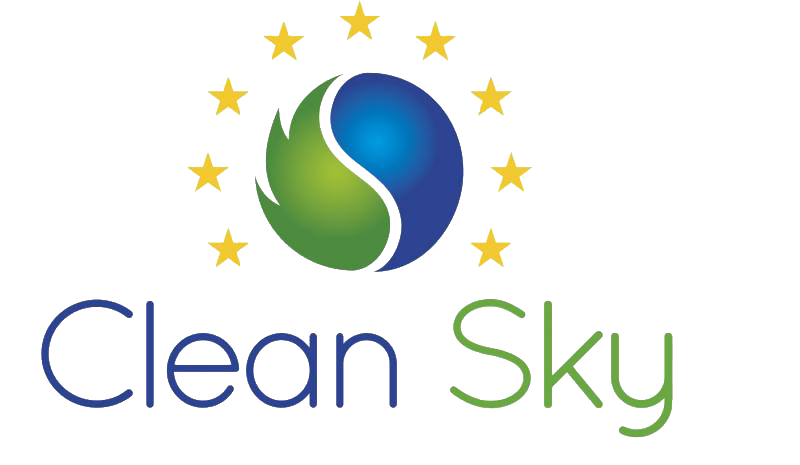TABASCO Project
Testing of Advanced Basic Structures with novel Low-Cost Solutions
Started: 2019
Completion: 2022
Participants: Leader: APPLUS LABORATORIES, THIOT INGENIERIE
Funding: This project has received funding from the Clean Sky 2 Joint Undertaking (JU) under grant agreement No 864940. The JU receives support from the European Union’s Horizon 2020 research and innovation programme and the Clean Sky 2 JU members other than the Union.


Project aims:
The Tabasco R&D project is part of the Clean Sky research programme, focused on developing breakthrough technologies to improve the environmental performance of airplanes and air transport.
The goal of the Tabasco project is to improve the accuracy of virtual testing based on FEM models in order to facilitate its acceptance in aerospace certification campaigns.
Virtual testing is a well-known strategy used to reduce costs and campaign testing times. In order to be considered a true alternative in safety-critical industries like aerospace, the reliability of the FEM models being developed must be proven by correlation with experimental data.
The use of virtual testing in this project makes it possible to validate the integration of a novel Advanced Rear End demonstrator developed by Airbus, which contributes to achieving the environmental performance targets established by the Clean Sky programme.
The Tabasco project has three specific and complementary research sub-objectives:
- Implementing new methodologies that contribute to the validation of virtual testing models by correlation with experimental data.
- Designing and manufacturing innovative tools and test setups to maximize the instrumented area and better identify the boundary conditions of the test.
- Researching advanced instrumentation solutions to improve the quality of the results, reducing costs and times for future certification testing campaigns.
Efficient methodologies to maximise data output and minimise time and effort
The accuracy of the FEM models used to carry out virtual tests can be determined by performing high-reliability experimental tests and contrasting the data obtained from them with the results of each virtual test. In order to improve the simulations required to perform these virtual tests, all real-test conditions should be taken into account, as well as the test setups.
To this end, this project will implement the CAETestBench Methodology, the Absolute Accurate Methodology and the Virtual Field Method (VFM):
- The CAETestBench Methodology validates simulations against a carefully selected and less complex physical test specimen that is representative of the model being validated. This makes it possible to probe the accuracy of the simulation and determine its ability to replicate real tests. Tests range from simple tensile/compression to more complex multi-axial modes, impact and failure.
- The Absolute Accurate Methodology is a testing approach developed by Applus+ and already implemented in other R&D projects. The goal of this methodology is to provide a more robust identification of test boundary conditions by extending the instrumentation beyond the test specimen and monitoring the test rig. By doing so, we can maximize the data obtained from real tests in aspects such as specimen position or load application conditions.
This approach requires designing the test setup carefully, taking into account the sensors to be applied to the test specimen. Finally, engineers will create a virtual model of the test and run FEM analysis on different boundary conditions scenarios (slight position variations, misalignments…) that may occur during the test.
- Material data obtained from experimental testing is required to improve the accuracy of virtual tests. In order to reduce the number of material tests required to feed the virtual testing models, this project will implement the Virtual Fields Method (VFM). The Virtual Fields Method (VFM) is a methodology that deals with more complex configurations leading to non-uniform states of deformation, while the standard material test methods currently in place rely on simple uniaxial mechanical tests.
This methodology has been developed thanks to the work carried out during the 90s and early 2000 by Doctors Fabrice Pierron and Michel Grédiac and thanks to the advances in precision and versatility of optical Digital Image Correlation (DIC). This full-field measurement technique allows for the determination of deformation maps and, for non-uniform load configurations, contains much more information than standard uniaxial tests.
Therefore, instead of performing multiple uniaxial tensile tests in different directions, it is possible to obtain the same directional information to identify the material properties of the test specimen from a single more complexly-shaped specimen.
Implementing innovative IT tools to improve monitoring and correlation in virtual testing
The project will make good use of three different IT tools, developed by Applus+, to enhance the calibration and validation of the FEM Models. These software solutions provide a digital infrastructure that facilitates the comparison of the outputs obtained from real tests and simulations, the generation of material cards used in simulation software, and the validation of the simulation model.
- Applus+ E-Testing©: test-monitoring software that facilitates the follow-up of real-time metrological data using a basic internet browser. This technology correlates real-time video recording and gathered data (load, deformation…) with FEM predictions.
- Matereality©: advanced materials database that provides the necessary infrastructure to store and search for material data, as well as generate material cards used in virtual testing simulations.
- PicSci©: IT tool that provides a robust, scalable database infrastructure for storing, analysing, and comparing structural test data and virtual test results. It is a complementary tool used to verify and validate the simulation models by adopting the CAETestBench methodology.
New instrumentation solutions to improve data quality
The project will also implement new metrological solutions and evaluate their capacity to improve the quality of test data and reduce test costs.
- Faster and more accurate optical full-field stress measurement thanks to:
- The reduction of measurement uncertainty via Digital Image Correlation (DIC).
- Advanced algorithms that allow for real-time DIC measurement.
- Innovative methods to improve crack/de-bonding onset and propagation detection via:
- Acoustic cameras and contactless metrology to quickly detect hot-spot de-bonding and first failure cracks.
- Nonlinear optical-stimulated thermography to live-monitor damage evolution.
- Improved wireless strain gauges. This technology reduces test set-up times and complexity and allows for the Structural Monitoring of the tested component. Applus+ IoT Lab’s capacities to validate wireless devices are at the core of this technology.
About us
Applus+ Laboratories is a strategic provider of testing and engineering services to the main aircraft manufacturers and their suppliers. Our network of laboratories and engineering departments across Europe, Asia and North America enables us to meet the challenging delivery times of aerospace programmes. We also collaborate with the aerospace industry in research and technology programmes to develop a range of innovative solutions.